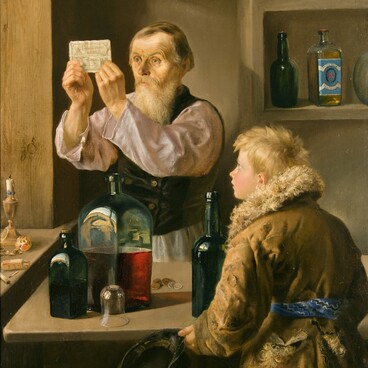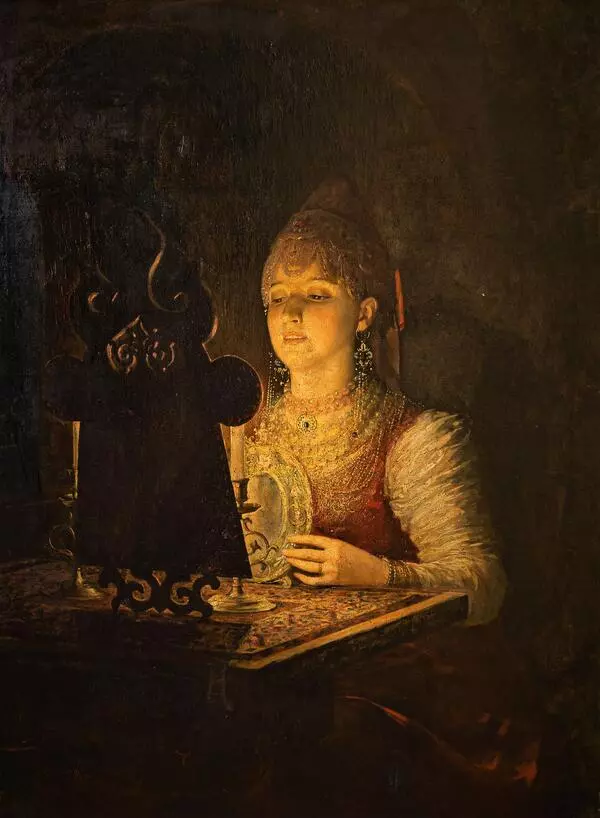Alexander Nikanorovich Novoskoltsev was a Russian artist and academician of historical painting at the Imperial Academy of Arts. He was born in 1843 in the city of Zemlyansk, Voronezh province. In 1878, Alexander Nikanorovich graduated from the Moscow School of Painting, Sculpture and Architecture and entered the natural class of the Imperial Academy of Arts. During his studies, the artist received gold and silver medals from the Academy. Novoskoltsev received a pension from the Academy of Arts, which allowed him to study at academies in different European countries.
In addition to paintings, Alexander Nikanorovich also created images for iconostases and made sketches of church mosaics. Based on the sketches of Novoskoltsev, colored glass was made for the altar windows with the image of the Savior, the Virgin and John the Baptist, and the mosaics in the Church of the Savior on Spilled Blood. The image of Tsar Ivan IV Vasilyevich became extremely popular among artists of the second half of the 19th century. In most cases, Ivan the Terrible was depicted as an elderly man with a fierce look. This image took root in public thought thanks to Nikolay Karamzin, who described Ivan IV in his “History of the Russian State” in this way. Often, through the figure of the ferocious ruler of the past, the artists of that time expressed disagreement with the ongoing state policy.
The image of the tsar in the painting by Alexander Novoskoltsev echoes the famous sculpture of the same name by Mark Antokolsky. In it, the emphasis is shifted to the psychological characterization of the image of the “tormentor and martyr.” Not only the terrible pangs of conscience determine the inner state of the tsar, but also malice, thirst for revenge, anger and inexhaustible strength of spirit.
Novoskoltsev sets the action in the royal chambers of the Kremlin Terem Palace, complementing a complex psychological portrait with luxurious interiors. In addition to the emotionally saturated atmosphere, the artist does an excellent job of conveying the historical atmosphere. The painter scrupulously tries to recreate the atmosphere of the 16th century through the furniture design, decorative carvings, clothing and interior decoration techniques.
Notable is the history of how Novoskoltsev’s works
entered the Voronezh Museum. The study for the painting, which is exhibited
next to the final work, was purchased in Voronezh in 1919 for 120 rubles. The
inventory book indicates that the funds for the purchase of the study were
allocated from the sale of pears from the museum garden. The final work was
purchased much later, in 1959, from the Leningrad collector Alexander Kovylov.



